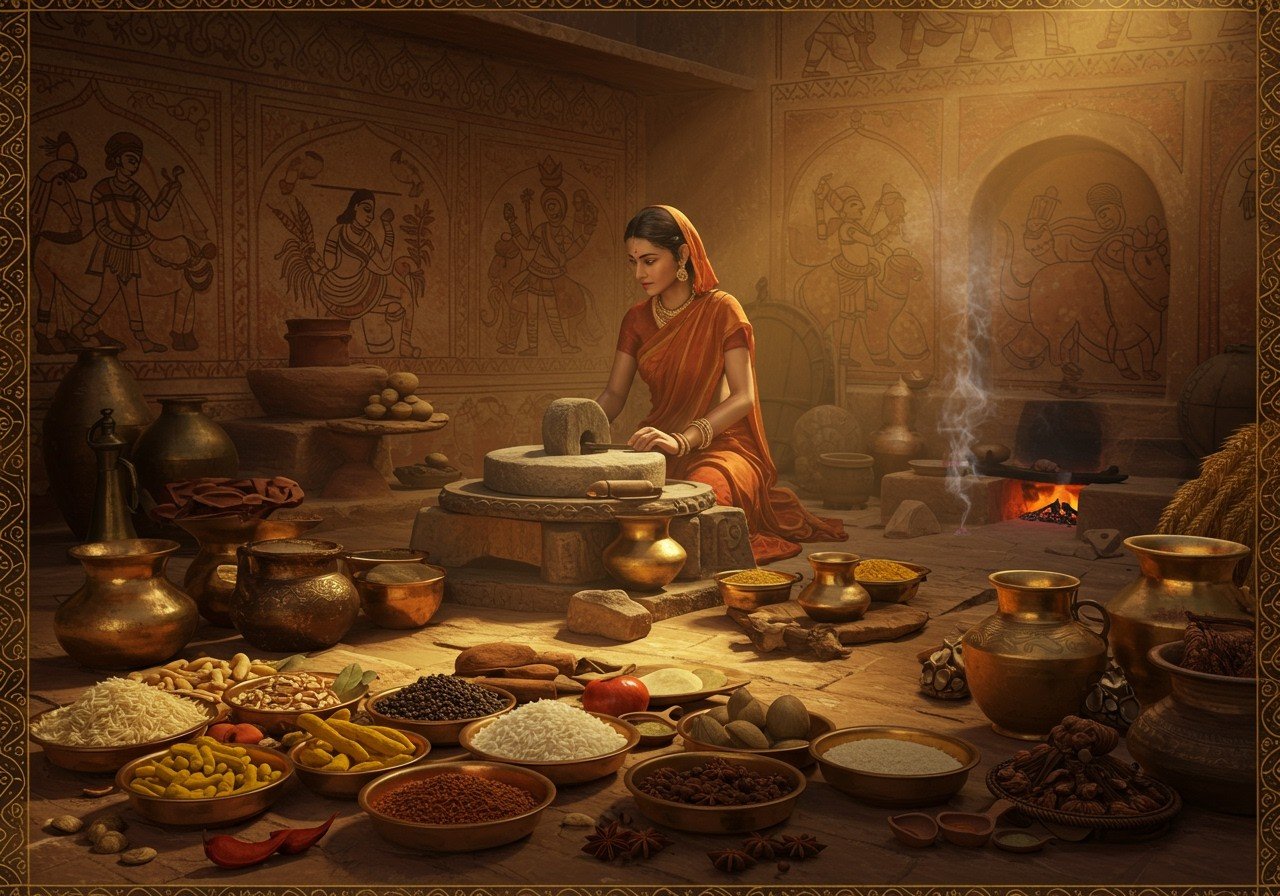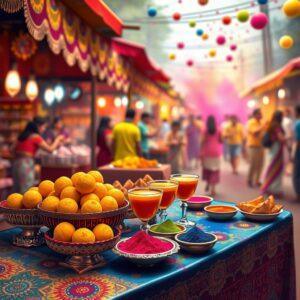
Ancient Indian cuisine boasts a rich history, tracing its roots back to the Bronze Age (around 3300-1200 BCE). This era witnessed the development of agriculture, food processing, and cooking techniques that laid the groundwork for the regional cuisines we savor today. Let’s delve into this fascinating culinary past and explore how these ancient practices continue to shape modern Indian food.
The Rise of Agriculture During the Bronze Age
The Bronze Age marked a pivotal moment in ancient India’s food production. The introduction of staple crops like wheat, barley, and rice revolutionized dietary habits. Advanced irrigation systems boosted productivity and facilitated the establishment of permanent settlements. The domestication of animals such as cattle, sheep, and goats further enriched food resources. Innovative tools like plows enhanced farming efficiency. These agricultural advancements had profound social and economic consequences, influencing regional variations in crop cultivation and giving rise to distinct local cuisines.
Early Culinary Practices: Food Processing and Cooking
Archaeological discoveries, including pottery, grinding stones, and hearths, offer glimpses into the culinary practices of the Bronze Age. Food preparation involved methods like grinding, roasting, boiling, and fermenting, each impacting the flavor and nutritional value of the food. The use of spices and herbs for seasoning and preservation, a hallmark of modern Indian cuisine, also has its origins in this period. Communal cooking and feasting played a crucial role in social and religious gatherings. Preservation techniques like drying and salting ensured food security throughout the year, reflecting a focus on dietary diversity and balanced nutrition.
The Bronze Age Influence on Regional Indian Cuisines
Geography played a significant role in shaping the diverse culinary traditions across ancient India. Locally available ingredients and established trade routes resulted in regional variations in food. Specific dishes can trace their origins back to Bronze Age practices, including fermented foods and grain-based staples. Cultural exchange further enriched the culinary landscape, introducing new cooking techniques and ingredients. These ancient culinary practices continue to resonate in contemporary regional cuisines, preserving a rich heritage through traditional methods.
Cultural and Ritual Significance of Food
Food held deep cultural significance in ancient India, featuring prominently in religious ceremonies, festivals, and daily rituals. Symbolic meanings and spiritual beliefs were often associated with specific foods and ingredients. The act of sharing food fostered social bonds within communities. Dietary restrictions and taboos varied among different groups. Food also played a role in social hierarchy and status, with ancient rituals still observed in modern Indian culture.
Archaeological Discoveries and Historical Records
Excavations at sites like the Indus Valley Civilization (c. 3300-1300 BCE) have provided invaluable insights into ancient food practices. Ancient texts, inscriptions, and art further document culinary traditions, offering a window into the past. The contributions of archaeologists and historians are essential in reconstructing the dietary habits of ancient Indians. However, interpreting archaeological evidence related to food can be challenging, requiring interdisciplinary approaches to gain a comprehensive understanding of ancient Indian cuisine.
Preserving Ancient Culinary Heritage in the Modern Era
Culinary historians, chefs, and cultural enthusiasts are actively involved in preserving traditional recipes and cooking methods. Food festivals, heritage restaurants, and cooking classes educate the public about the rich history of Indian cuisine. Traditional methods continue to influence contemporary cooking trends, maintaining a strong connection to cultural identity. Technology and digital platforms play a vital role in documenting and sharing recipes, ensuring their accessibility for future generations. Preserving authenticity amidst modern changes remains a crucial aspect of safeguarding this invaluable culinary heritage.
FAQs on Ancient Indian Cuisine: A Bronze Age Culinary History
What were the primary food sources during the Bronze Age in India?
The Bronze Age diet relied heavily on grains like barley, wheat, and millet. Lentils, fruits, and vegetables also played a significant role.
How did agriculture evolve during the Bronze Age in India?
The introduction of bronze tools revolutionized agriculture, making farming more efficient and leading to increased food production and the growth of settlements.
What cooking methods were employed in the Bronze Age?
Evidence suggests the use of fire pits for roasting, clay ovens for baking, and grinding stones for processing grains into flour.
How did the Bronze Age shape regional Indian cuisines?
The ingredients and techniques of the Bronze Age formed the basis for many regional cuisines in India, with the use of grains, legumes, and spices tracing their roots back to this period.
What proof do we have of food processing during the Bronze Age?
Archaeological findings of grinding stones and storage jars indicate food processing and storage practices. Remains of cooked grains and seeds provide further evidence of food preparation methods.
Did people in the Bronze Age use spices in their cooking?
Yes, various local spices and herbs were used for flavoring, a practice that continues to be a defining characteristic of Indian cuisine.
Were dairy products part of the Bronze Age diet?
Evidence suggests the consumption of dairy products like milk and curd, supported by findings of dairy residue in ancient pottery.
How did the Bronze Age influence food storage techniques?
The development of pottery enabled more effective storage of grains and other food items, improving food supply management and reducing waste.
Poojn.in: Connecting You to Ancient Culinary Traditions
Poojn.in, India’s leading online store for cultural goods and services, offers a wide selection of products that connect you to India’s rich culinary heritage. Explore our collection of traditional cookware and ritual items:
- Green Mung Dal: A staple in Indian cuisine since ancient times, green mung dal is a versatile ingredient used in various dishes. Poojn.in offers high-quality, organically sourced green mung dal.
- Supari (Areca Nut): Used in traditional ceremonies and offerings, supari holds cultural significance. Find authentic supari at Poojn.in.
- Large Size Elaichi (Black Cardamom): A spice with a rich history, black cardamom adds depth of flavor to traditional dishes. Poojn.in offers premium quality black cardamom.
Conclusion
The culinary legacy of the Bronze Age in India continues to resonate in the diverse and vibrant culinary traditions we enjoy today. The agricultural advancements, food processing techniques, and cooking methods of this era laid the foundation for the flavors, ingredients, and cultural significance that define Indian food. By exploring and preserving these ancient practices, we connect with our heritage and appreciate the profound impact that food has on our lives.


